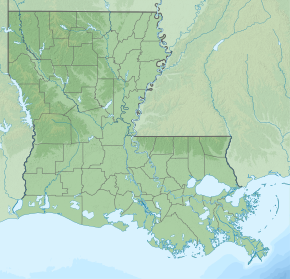
Back معركة مانسفيلد Arabic Bataille de Mansfield French マンスフィールドの戦い Japanese Slag bij Mansfield Dutch Batalha de Mansfield OC Сражение при Мансфилде Russian
| Battle of Mansfield | |||||||
|---|---|---|---|---|---|---|---|
| Part of the American Civil War | |||||||
 Map of the battlefield, 1891 | |||||||
| |||||||
| Belligerents | |||||||
|
|
| ||||||
| Commanders and leaders | |||||||
|
|
| ||||||
| Units involved | |||||||
| Army of Western Louisiana | Army of the Gulf | ||||||
| Strength | |||||||
| 8,800[1][2] to 9,000 engaged[3] |
20,000[4] 12,000 engaged[5][6] | ||||||
| Casualties and losses | |||||||
| 1,000 total |
2,235 total 113 killed 581 wounded 1,541 captured/missing | ||||||
Location in Louisiana | |||||||
The Battle of Mansfield, also known as the Battle of Sabine Crossroads, on April 8, 1864, in Louisiana formed part of the Red River Campaign during the American Civil War, when Union forces were attempting to occupy the Louisiana state capital, Shreveport.
The Confederate commander, Major-General Dick Taylor, chose Mansfield as the place where he would make his stand against the advancing Union army under General Nathaniel Banks. Taylor concentrated his forces at Sabine Crossroads, knowing that reinforcements were nearby. Banks prepared for a fight, though his own army was not fully assembled either. Both sides were reinforced by stages throughout the day.
After a brief resistance, the Union army was routed by the Confederates, consisting mainly of units from Louisiana and Texas, reportedly strengthened by hundreds of men breaking parole. The Battle of Mansfield was followed immediately by the Battle of Pleasant Hill.
- ^ Kennedy 1998, p. 268.
- ^ Johnson 1958, p. 133.
- ^ Foote 1986, pp. 43, 46.
- ^ Foote 1986, p. 43.
- ^ Foote 1986, p. 46.
- ^ Johnson 1958, p. 140.
